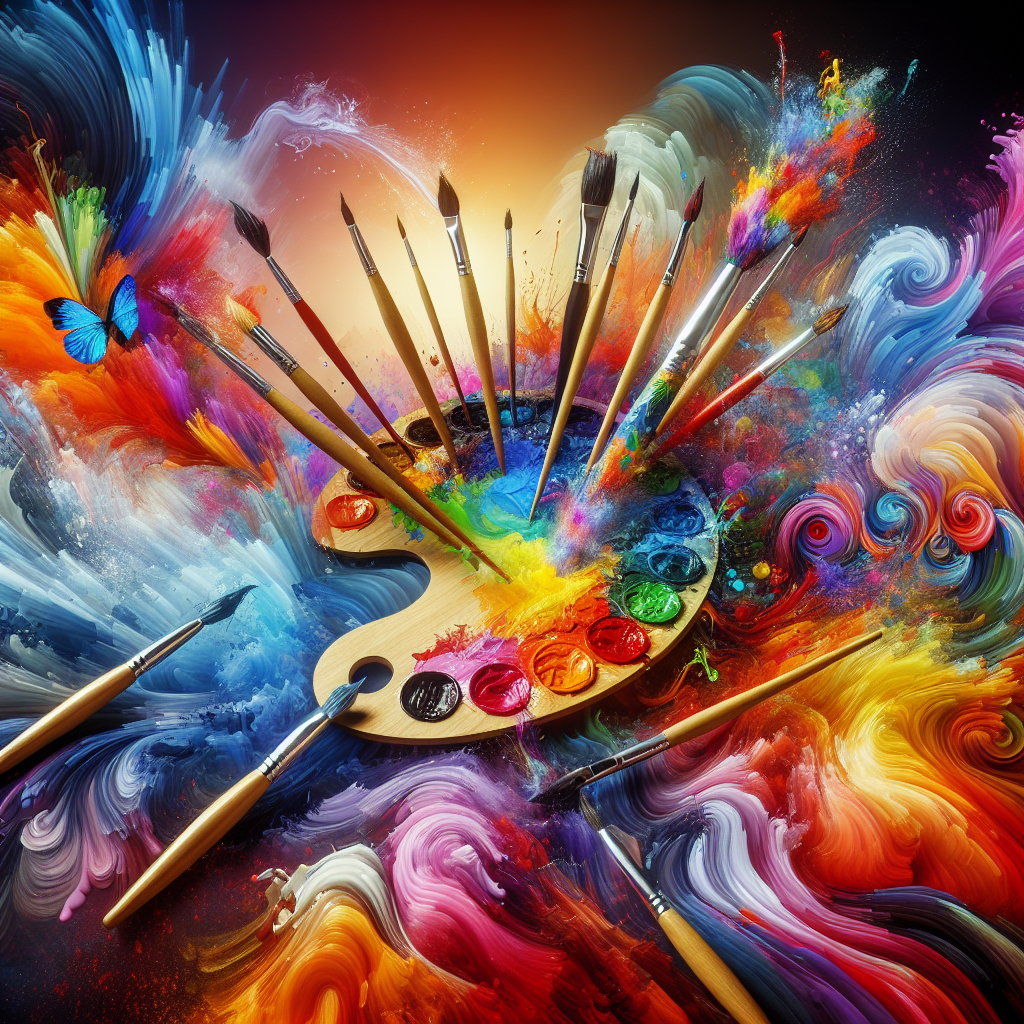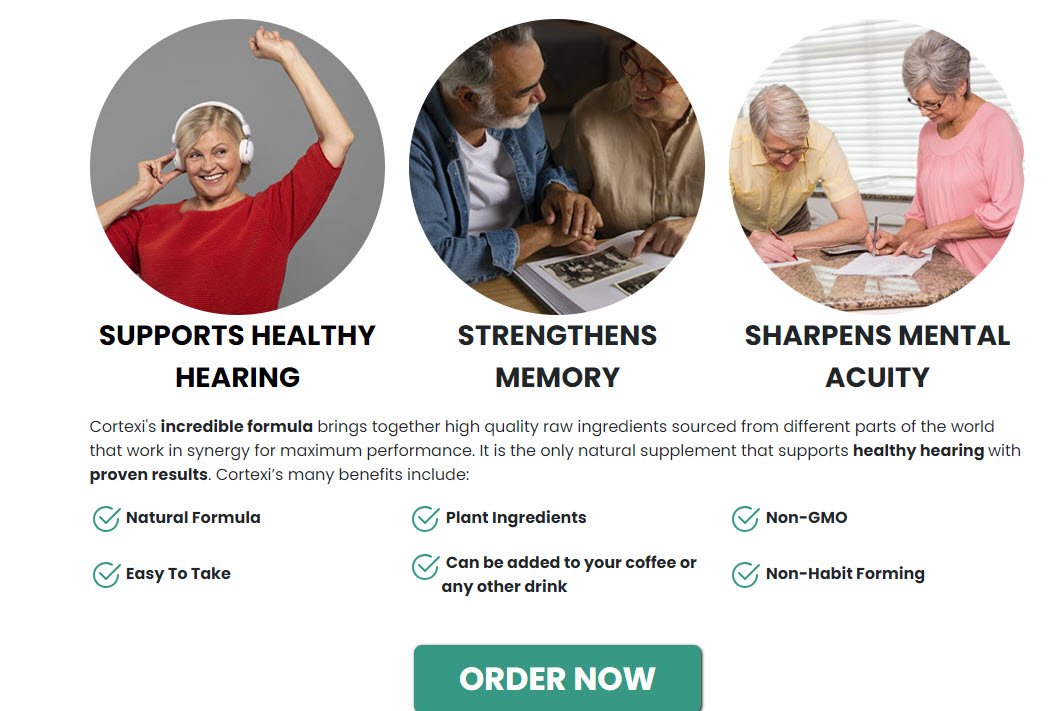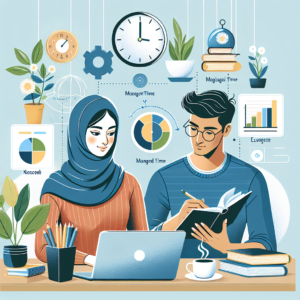In this article, you will discover practical tips on how to unleash your creativity and develop effective techniques to boost your creative thinking. Whether you are an artist, writer, or simply someone who wants to tap into their creative side, these strategies will help you think outside the box and come up with innovative ideas. So, get ready to embark on a journey of self-discovery and exploration as you learn how to nurture and harness your creative potential.
- Identify and Challenge Your Assumptions
- Adopt a Growth Mindset
- Engage in Divergent Thinking
- Cultivate Curiosity and Inquisitiveness
- Create an Inspiring and Supportive Environment
- Practice Mindfulness and Reflection
- Embrace Constraints and Embrace Them
- Experiment and Take Risks
- Seek Inspiration from Different Sources
- Prioritize and Manage Your Time Effectively
Identify and Challenge Your Assumptions
Questioning the Status Quo
When it comes to boosting creativity, one of the first steps is to question the status quo. Take a step back and evaluate the assumptions and beliefs that influence your thinking. By challenging these assumptions, you open yourself up to new possibilities and ways of approaching problems. Don’t be afraid to ask why things are done a certain way and consider alternative perspectives.
Recognizing Limiting Beliefs
Sometimes, our own beliefs and thoughts can hold us back from reaching our creative potential. It’s important to recognize these limiting beliefs and challenge them. For example, if you believe that you’re not a creative person or that your ideas aren’t valuable, it can hinder your ability to think outside the box. By acknowledging and challenging these beliefs, you can create a more positive and open mindset.
Exploring Different Perspectives
Creativity thrives when we’re able to see things from different angles. Engage in discussions with people from diverse backgrounds and seek out their perspectives. This exposure to different viewpoints can spark new ideas and broaden your own understanding. Additionally, try to immerse yourself in different cultures, art forms, and experiences to gain a fresh perspective on the world. Remember, embracing different perspectives can fuel creativity.
Being Open to New Ideas
To ignite your creativity, it’s essential to be receptive to new ideas. This means being open-minded and setting aside preconceived notions. Don’t dismiss ideas too quickly without exploring them further. Be curious and give yourself permission to explore unconventional concepts. Sometimes the most innovative ideas come from unexpected sources, so be open to the possibility of something truly unique and original.
Adopt a Growth Mindset
Embracing Failure as a Learning Opportunity
Fear of failure is a common roadblock to creativity. However, adopting a growth mindset involves seeing failure as an opportunity for growth and learning. When something doesn’t go as planned, don’t view it as a setback but rather as a chance to gain valuable insights. Embrace failure as an essential part of the creative process and use it to refine your ideas and approach.
Viewing Challenges as Exciting
Instead of being intimidated by challenges, try to see them as exciting opportunities. The roadblocks you encounter can push you to think outside the box and come up with innovative solutions. Embracing challenges with enthusiasm allows you to tackle them head-on and tap into your creative potential. Trust in your ability to overcome obstacles and embrace them as stepping stones towards creativity.
Valuing Effort and Persistence
Creativity often requires dedication and perseverance. By valuing effort and persistence, you reinforce the importance of consistently working on your creative projects. Recognize that creativity is a continuous process that evolves over time. Put in the effort, even when inspiration seems elusive, and trust that your persistence will pay off in the long run.
Seeking Feedback and Constructive Criticism
Feedback and constructive criticism are invaluable tools for growth and improvement. Share your ideas with others and actively seek their perspectives. Embrace feedback as an opportunity to refine your ideas and understand different viewpoints. Remember that not all feedback will be positive, but it can all contribute to your creative development. Actively seek out constructive criticism to fuel your growth as a creative thinker.
Engage in Divergent Thinking
Encouraging Idea Generation
Divergent thinking is the ability to generate a wide range of ideas. To foster this type of thinking, create an environment that encourages idea generation. Set aside dedicated time to brainstorm and encourage your mind to wander freely. Write down as many ideas as possible without judgment. Quantity over quality is the key at this stage.
Practicing Brainstorming Techniques
Brainstorming is a tried-and-true technique for generating creative ideas. It involves gathering a group of individuals or setting aside time for solo brainstorming sessions. During these sessions, withhold judgment and encourage wild and unconventional ideas. The goal is to build on each other’s ideas and expand the realm of possibilities.
Embracing Unconventional Solutions
Embracing unconventional solutions involves breaking away from traditional thinking patterns. Challenge yourself to explore ideas that seem outlandish or unconventional. This can stretch your creativity and lead to breakthrough solutions. Remember, some of the greatest innovations were born from thoughts that seemed impossible at first.
Suspending Judgment during the Idea Generation Phase
During the initial stages of idea generation, it’s important to suspend judgment. Allow all ideas to flow freely without immediately evaluating their feasibility or practicality. This creates a safe space for creative thinking and prevents the fear of judgment from stifling your ideas. Embrace a mindset of curiosity and explore each idea with an open mind.
Cultivate Curiosity and Inquisitiveness
Asking Thought-Provoking Questions
Curiosity is the driving force behind creativity. Exercise your curiosity by actively asking thought-provoking questions. Challenge assumptions and seek deeper understanding. As you become more inquisitive, you’ll start to uncover new connections and ideas that may have been overlooked before.
Continuously Learning and Exploring
To foster creativity, never stop learning and exploring. Engage in continuous learning by reading books, attending workshops, and taking online courses. Expose yourself to new ideas, concepts, and fields that are outside your comfort zone. The more you expand your knowledge and experiences, the more diverse your creative perspectives will become.
Seeking Out New Experiences
Creativity can be sparked by immersing yourself in new experiences. Push yourself to try new things, visit new places, and meet new people. These experiences can provide fresh inspiration and help you see the world through a different lens. Embrace the unknown and allow it to fuel your creative endeavors.
Maintaining a Sense of Wonder
Maintaining a sense of wonder is vital for nurturing creativity. Approach the world around you with childlike curiosity, marveling at the simplest of things. Cultivate a mindset that finds beauty and inspiration in the ordinary. By appreciating the wonders of everyday life, you’ll keep your creativity alive and flourishing.
Create an Inspiring and Supportive Environment
Designing a Creative Workspace
Your physical environment can significantly impact your creativity. Design a workspace that inspires and encourages creative thinking. Surround yourself with colors, objects, and artwork that resonate with your creative spirit. Organize your tools and materials in a way that promotes ease of access and sparks inspiration.
Surrounding Yourself with Stimulating Objects
Fill your surroundings with objects that stimulate your creativity. This could be books, artwork, or even simple items that hold personal meaning. Choose objects that inspire and spark your imagination. By surrounding yourself with visually appealing and thought-provoking items, you create an environment that nurtures your creative endeavors.
Building a Network of Supportive Peers
Surrounding yourself with supportive peers who share your passion for creativity can be incredibly valuable. Seek out individuals who inspire you and are open to collaboration. Engage in meaningful discussions and exchange ideas. By building a network of like-minded individuals, you create a supportive environment that fosters creativity.
Encouraging Collaboration and Exchange of Ideas
Collaboration is a powerful catalyst for creativity. Encourage collaboration by seeking opportunities to work with others on creative projects. Embrace the diversity of perspectives and ideas that come from working alongside different individuals. Engage in open and honest conversation, where ideas can be freely shared and built upon.
Practice Mindfulness and Reflection
Engaging in Meditation and Mindful Activities
Practicing mindfulness and engaging in activities that promote relaxation can help quiet the mind and stimulate creativity. Incorporate meditation or other mindful practices into your daily routine to promote focus and clarity. By calming the noise within, you create an environment for creative thoughts to emerge.
Taking Regular Breaks for Relaxation
Taking breaks is essential for maintaining creativity and preventing burnout. Schedule regular breaks throughout your day to relax and recharge. Engage in activities that rejuvenate your mind and body, such as taking a walk, listening to music, or pursuing a hobby. By creating space for relaxation, you allow your mind to reset and open up to new creative possibilities.
Analyzing Past Creative Processes
Reflection plays a crucial role in the creative process. After completing a project, take time to analyze your creative process. Consider what worked well and what could be improved for future endeavors. Reflecting on your past work allows you to refine your approach and identify patterns that promote creativity.
Promoting Self-Awareness and Self-Reflection
Developing self-awareness is key to understanding your unique creative process. Take time to reflect on your thoughts, emotions, and motivations. Understand how your environment and mindset impact your creative output. By cultivating self-awareness, you can adjust and align your actions to enhance your creative capabilities.
Embrace Constraints and Embrace Them
Using Limitations as Catalysts for Innovation
Constraints can spur innovation by pushing you to think creatively within boundaries. Embrace limitations as catalysts for innovation rather than hindrances. Instead of viewing restrictions as obstacles, see them as opportunities to find unique and unexpected solutions.
Focusing on Simplifying and Streamlining
When faced with constraints, focusing on simplification can lead to breakthroughs. Simplify your ideas and streamline your creative process to eliminate unnecessary complexity. By distilling your ideas to their essence, you can uncover innovative solutions that may have otherwise remained hidden.
Finding Creative Solutions within Constraints
Creativity often thrives under constraints. Instead of being overwhelmed by limitations, train yourself to find creative solutions within those constraints. Explore different possibilities and consider how you can leverage your resources effectively. By embracing constraints, you unlock your ability to think outside the box and innovate.
Applying the Concept of Less is More
The concept of “less is more” can be a powerful guide in fostering creativity. Simplicity and minimalism can help eliminate distractions and allow your ideas to shine. Focus on the core elements of your creative work and strip away unnecessary complexity. By embracing simplicity, you create space for your ideas to flourish.
Experiment and Take Risks
Trying New Approaches and Techniques
Creativity thrives on experimentation. Break free from your usual routines and try new approaches and techniques. Step into the unknown and explore uncharted territories. By pushing yourself to experiment, you invite new perspectives and expand the boundaries of your creativity.
Stepping out of Comfort Zone
Stepping out of your comfort zone is essential for personal and creative growth. Challenge yourself to take risks and embrace uncertainty. Push the boundaries of what feels familiar and comfortable. By venturing into the unknown, you open yourself up to new experiences and possibilities.
Accepting the Fear of Failure
Fear of failure can paralyze creativity unless it is acknowledged and accepted. Recognize that failure is a natural part of the creative process. Embrace the fear and use it as fuel to push beyond your limitations. Accept that failure is an opportunity for growth and learning, rather than something to be avoided at all costs.
Celebrating Lessons Learned from Taking Risks
Each risk you take, regardless of the outcome, is an opportunity for growth and learning. Celebrate your willingness to step outside of your comfort zone. Reflect on the lessons you’ve learned from taking risks, both successful and unsuccessful. By celebrating these lessons, you reinforce the value of taking risks and encourage continued growth.
Seek Inspiration from Different Sources
Exploring Art, Music, and Literature
Art, music, and literature are rich sources of inspiration for creativity. Immerse yourself in various art forms to stimulate your imagination. Explore different genres, styles, and mediums to expose yourself to diverse creative expressions. Allow the works of others to inspire and spark ideas within you.
Attending Conferences and Workshops
Attending conferences and workshops is an excellent way to gain new perspectives and insights. Engage with professionals in your field and learn from their experiences. Participate in workshops that encourage hands-on learning and skill development. By immersing yourself in these events, you expose yourself to fresh ideas and establish connections within the creative community.
Reading and Researching in Diverse Fields
Expand your knowledge and broaden your horizons by reading and researching in diverse fields. Explore subjects that are unrelated to your primary creative pursuit. Draw connections between seemingly unrelated concepts and discover new perspectives. The intersections between different fields can spark innovative ideas and unique approaches.
Connecting with Nature and the Outdoors
Nature is a boundless source of inspiration for creativity. Take time to connect with the outdoors and immerse yourself in the beauty of the natural world. Whether it’s a walk in the park or a hike through the mountains, nature has a way of rejuvenating the mind and sparking new ideas. Observe the patterns, colors, and textures around you and let them inspire your creative endeavors.
Prioritize and Manage Your Time Effectively
Setting Clear Goals and Deadlines
Setting clear goals and deadlines is essential for effective time management. Define what you want to achieve and establish realistic timelines to accomplish your creative projects. Breaking down larger goals into smaller, manageable tasks can help you stay focused and motivated.
Eliminating Distractions and Procrastination
Procrastination and distractions can hinder your creative progress. Identify the factors that distract you and take steps to eliminate or minimize them. Create a dedicated workspace free from distractions and establish boundaries to protect your creative time. By eliminating distractions, you can fully immerse yourself in the creative process and make the most of your time.
Organizing and Scheduling Creative Activities
Organizing and scheduling your creative activities can help streamline your workflow and ensure that you allocate sufficient time to nurture your creativity. Prioritize your creative projects and allocate dedicated time to work on them. By creating a schedule and sticking to it, you create a sense of discipline that fosters consistent creativity.
Balancing Work and Recreation
Maintaining a healthy work-life balance is vital for sustaining creativity. Recognize the importance of recreation and relaxation in recharging your creative energy. Schedule time for activities that bring you joy and allow you to unwind. Remember that taking care of yourself is essential for maintaining a creative mindset in the long run.
In conclusion, developing effective creativity-boosting techniques involves questioning assumptions, adopting a growth mindset, engaging in divergent thinking, cultivating curiosity, creating an inspiring environment, practicing mindfulness and reflection, embracing constraints, taking risks, seeking inspiration, and managing time effectively. By incorporating these strategies into your creative process, you can unlock your full creative potential and unleash your imagination.










